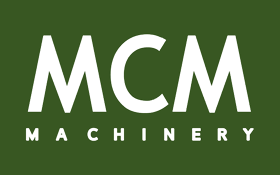- No product in the cart.
Homeowners should call an expert immediately if they notice any wood shavings, droppings, wood blistering, or mud tubes in these areas. Mud-like tunnels. They build mud tubes to keep them moisturized while they search for food. They choose their nesting location based on where the food is located. So to be highly accurate and legal for commerce, spring scales must be re-calibrated at the location at which they will be used. Most homeowners policies will include a clause stating it specifically does not cover this type of damage because they consider it preventable. If termites do show up, the bond protects the homeowner as retreatment is free, and in some cases, the damage is covered. A protection plan is purchased by the homeowner and must be renewed annually. Termite warranty. Most companies offer a warranty that is included with the treatment plan. This is different from a pretreatment plan as those are paid and carried out by the home’s original builder. Termites love moisture, although drywood termites are not as dependent on it.
Proactive builders want to prevent the risk of future lawsuits concerning termites that may be present before construction starts, which makes pre-construction termite treatment cost worth the price. Whole-house treatment methods usually cost around $1,000 but can cost upwards of $25,000 in the most severe cases. Pesticides and chemicals are usually used in combination with one of these treatments, as they are effective in targeted areas but not as a whole-house solution; they will add $100 to $500 per room to the cost. Annual renewal can be as little as $100 to $175 but must be accompanied by a preventative treatment. If you choose to have the treatment done after this, some companies roll the fee into the final costs. Termite prevention treatment costs $4 to $16 per linear foot or about $800 to $4,000 for טלגראס כיוונים ירושלים טלגראס כיוונים בת ים בדרום – telegrass2u.com, most homes. Better Homes and Gardens. Some soil-based species build nests in the soil, while those living inside homes build nests there. Bubbling and discoloration. When there are termites in the home, you might notice that the ceiling is bubbling or has discoloration. In case you are not so worried about the bigger picture, you might be delighted to know that led can not only save the environment but also the user’s bank balance.
Well, maybe few of you know that this business opportunity stands in the people’s need to take care of himself. They were going to actually initiate me by some painful business of piercing the muscles of my chest. Subterranean termites are smaller than their damp and dry relatives and often first appear at the foundation level of the home. These explorers are known as swarmers. You should understand that the fungal infection in your lawn exists if white, brown, or yellow patches are grown in diameter. If the thatch in your yard is more than 1/2 inch thick, remove it with a lawn rake or specialized dethatching rake. This is more expensive than a contract as it is a more in-depth treatment and guarantees that they will not return for one year. If they are present, you will then trade out the untreated wood for wood treated with a slow-acting growth inhibitor such as noviflumuron.
Because of the benefits of early detection, homeowners should search for indications that these bugs are present in or around the house. The first thing you should look for are tunnels, eaten or hollowed wood, or the bugs themselves. They are often visible on the baseboards or windowsills when they swarm. Termite droppings. They are called frass and are wood colored. To monitor, you place untreated wood in the container. Warped wood around windows or doors. It is often less expensive to treat the wood before an infestation rather than repair and replace it after an infestation. Q. How can I prevent another infestation? Location, property condition, and treatment method can all impact your final bill. The application of commercial fertilizer, however, has been one of the biggest changes to impact farming. However, the process is not always voluntary. However, instead of using chemicals, the home will be heated, using dry heat up to a temperature of between 122 degrees and 140 degrees Fahrenheit for a period of a half-hour to an hour.

